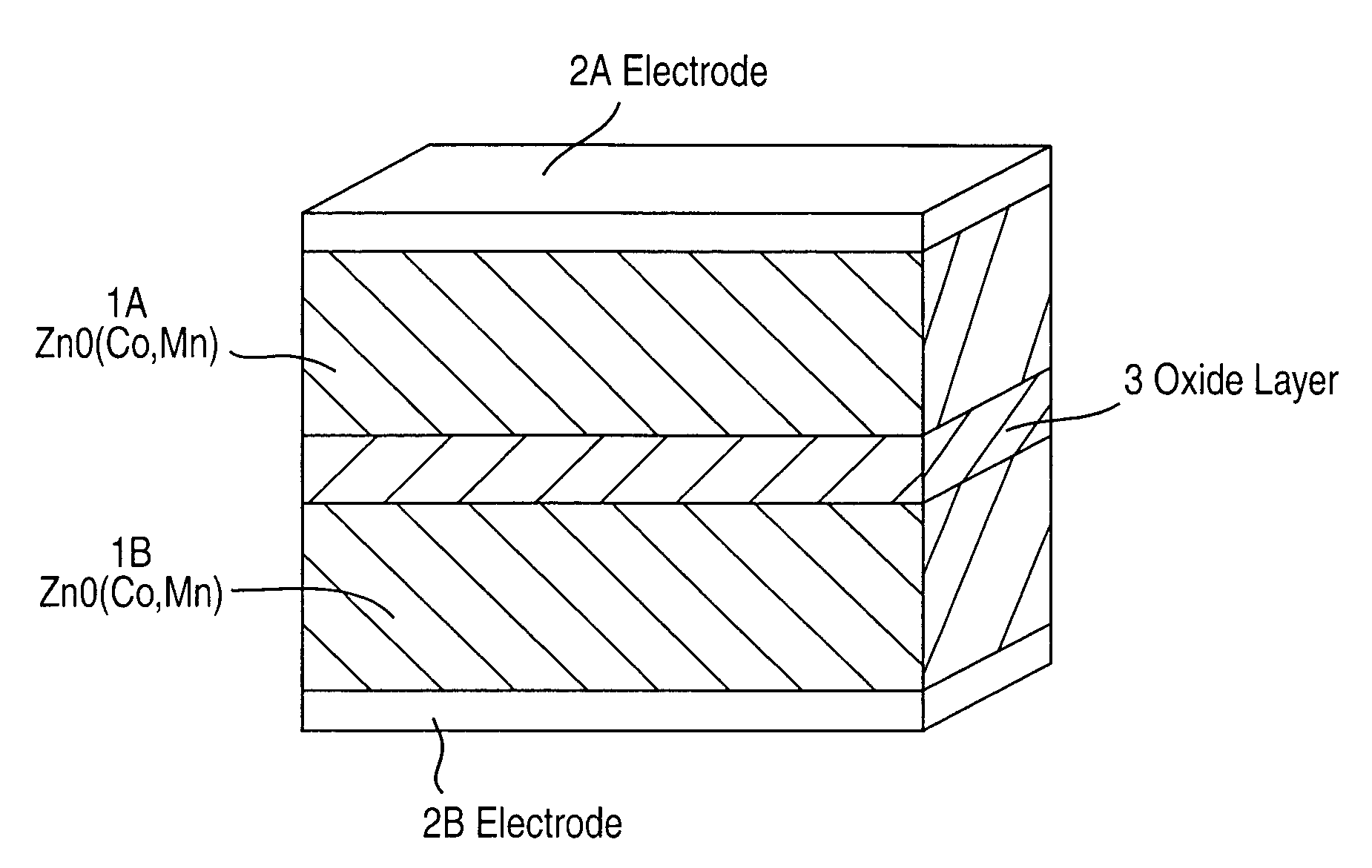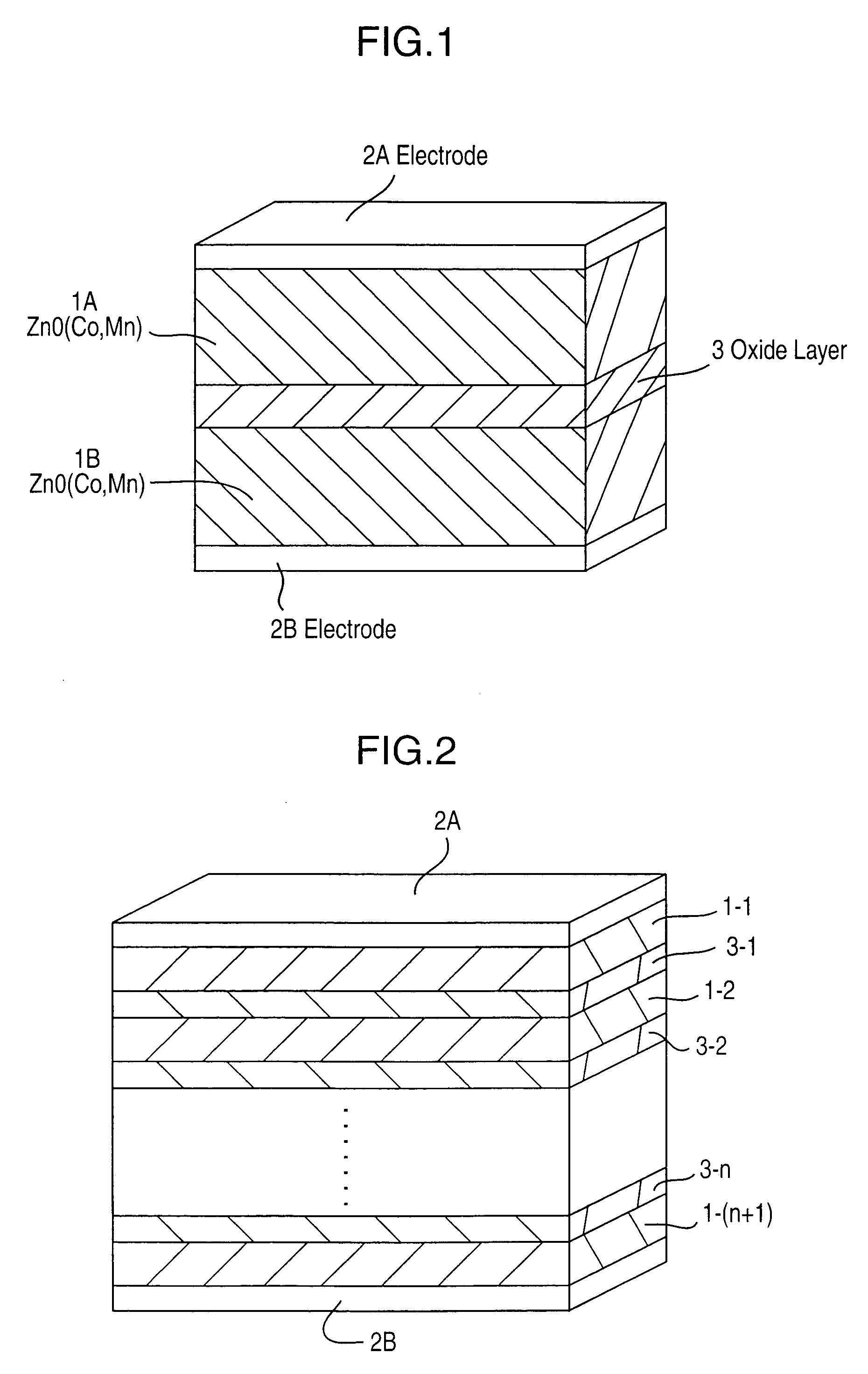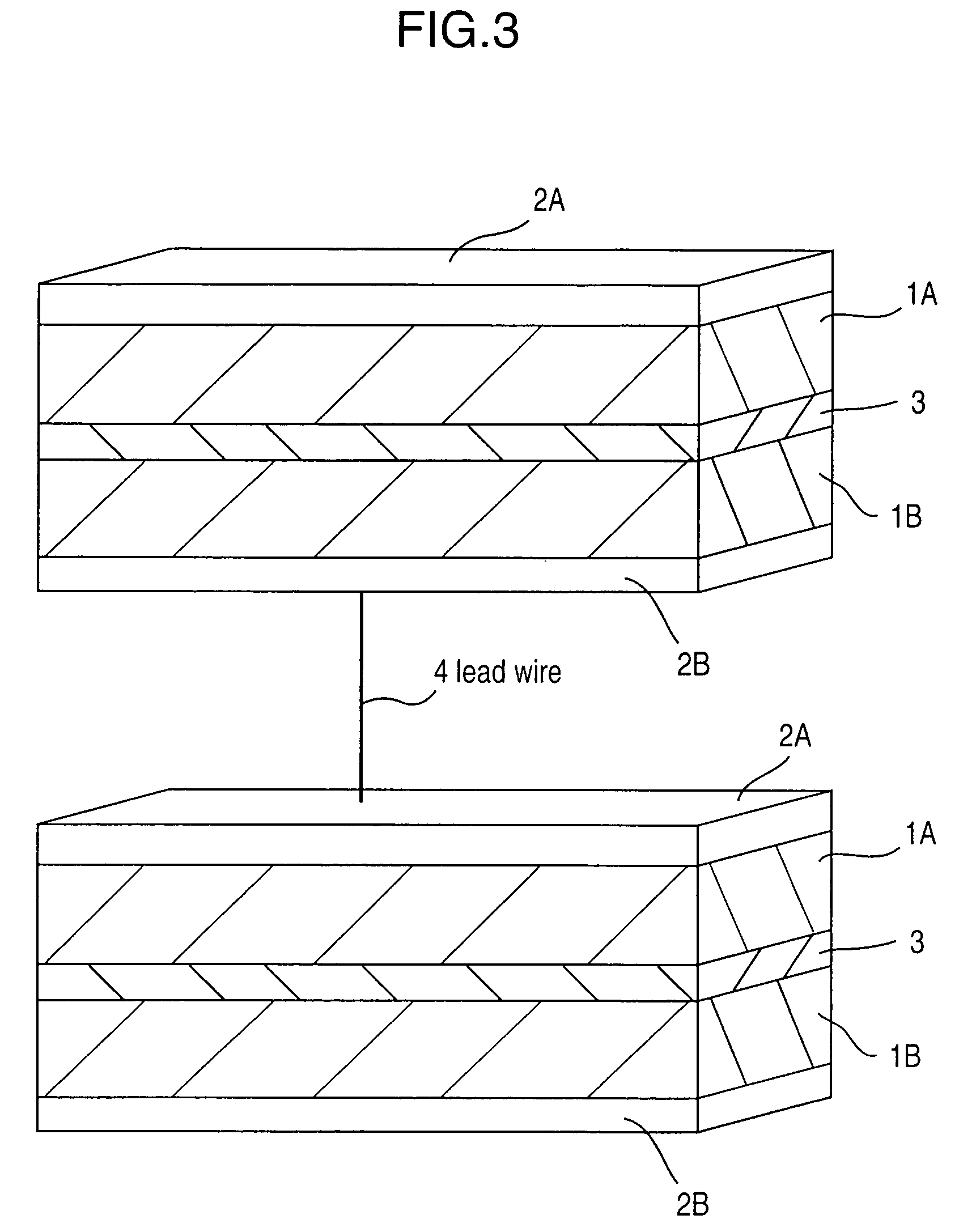Zinc oxide resistor and its manufacturing method
a technology of zinc oxide and resistor, which is applied in the direction of current responsive resistor, varistor core, varistor device, etc., can solve the problem of weak junction strength of the opposing zinc-oxide single crystal, poor performance of the varistor device without any intervening grain-boundary layer, etc. problem, to achieve the effect of accelerating the vitrification of the grain boundary layer, low melting point and high nonlinearity
- Summary
- Abstract
- Description
- Claims
- Application Information
AI Technical Summary
Benefits of technology
Problems solved by technology
Method used
Image
Examples
example
Inventive Example 1
[0072]Each of two zinc-oxide single crystals was in contact with a cobalt-oxide sintered body, in an oxygen flow at 1200° C. for 3 hours to diffuse cobalt into each zinc-oxide single crystal so as to prepare two cobalt-doped zinc-oxide single crystals. A quantity of the resulting solid solution of cobalt was calculated as about 1 at % based on optical spectrum. Then, 0.8772 g of boron oxide, 8.8068 g of bismuth oxide, 0.1517 g of cobalt oxide and 0.16431 g of manganese oxide were measured and mixed together. The obtained mixture was put in a platinum crucible, and molten at 900° C. in an oxygen flow. Then, the molten mixture was flowed out of the crucible, and solidified to obtain a bismuth-and-boron-containing oxide glass. After crushing the glass, the obtained glass powder was dredged on one of the prepared cobalt-doped zinc-oxide single crystals (5×5×0.5 mm), and another zinc-oxide single crystal was superimposed on the single crystal with the glass powder to f...
##ventive example 2
Inventive Example 2
[0074]Each of two zinc-oxide single crystals was in contact with a cobalt-oxide sintered body, in an oxygen flow at 1200° C. for 12 hours to diffuse cobalt into each zinc-oxide single crystal so as to prepare two cobalt-doped zinc-oxide single crystals. Then, 0.8772 g of boron oxide, 8.8068 g of bismuth oxide, 0.1517 g of cobalt oxide and 0.16431 g of manganese oxide were measured and mixed together. The obtained mixture was put in a platinum crucible, and molten at 900° C. in an oxygen flow. Then, the molten mixture was flowed out of the crucible, and solidified to obtain a bismuth-and-boron-containing oxide glass. After crushing the glass, the obtained glass powder was dredged on one of the prepared cobalt-doped zinc-oxide single crystals (5×5×0.5 mm), and another zinc-oxide single crystal was superimposed on the single crystal with the glass powder to form a sandwich structure.
[0075]Without particular pressing, the sandwich structure was heated at 1000° C. in a...
PUM
| Property | Measurement | Unit |
|---|---|---|
| thickness | aaaaa | aaaaa |
| width | aaaaa | aaaaa |
| length | aaaaa | aaaaa |
Abstract
Description
Claims
Application Information
 Login to View More
Login to View More - R&D
- Intellectual Property
- Life Sciences
- Materials
- Tech Scout
- Unparalleled Data Quality
- Higher Quality Content
- 60% Fewer Hallucinations
Browse by: Latest US Patents, China's latest patents, Technical Efficacy Thesaurus, Application Domain, Technology Topic, Popular Technical Reports.
© 2025 PatSnap. All rights reserved.Legal|Privacy policy|Modern Slavery Act Transparency Statement|Sitemap|About US| Contact US: help@patsnap.com



